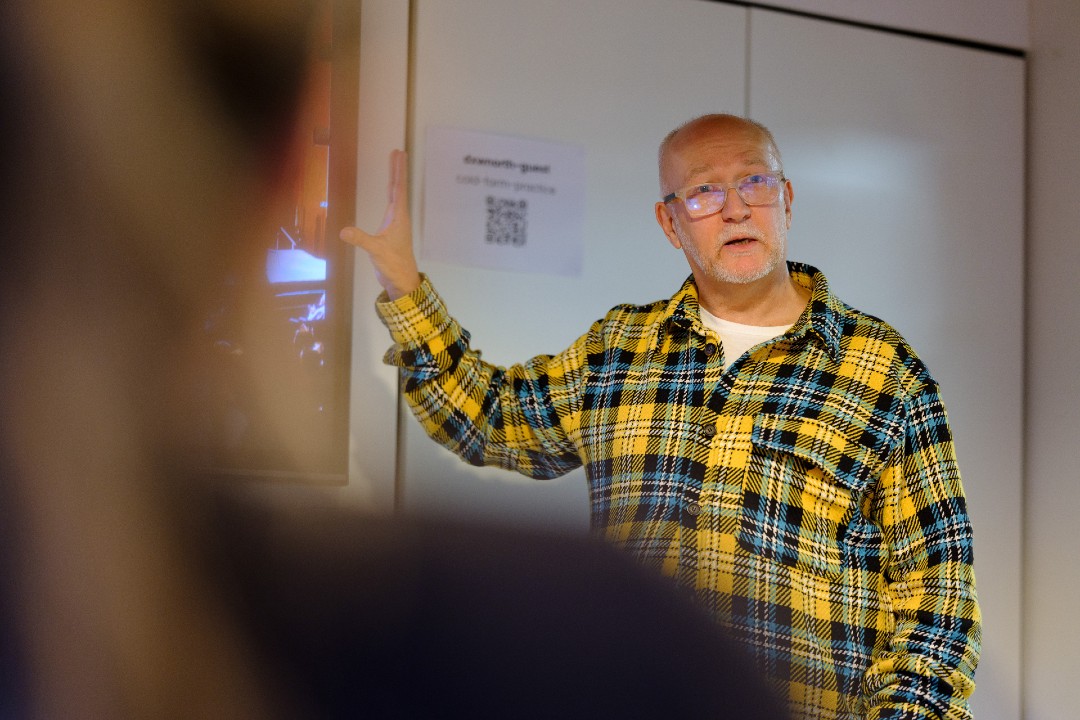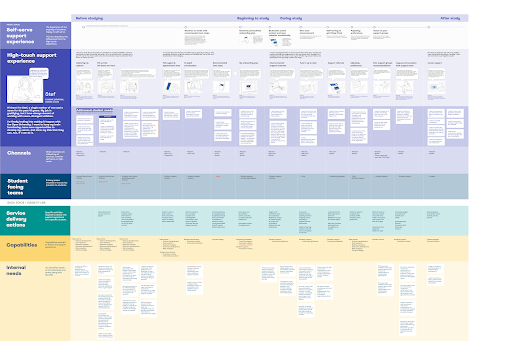What service designers do (part 2) – creating a vision and designing for the current reality

Service designers are connectors, facilitators and catalysts
Last week, we wrote about service designers’ role in generating understanding and facilitating decision making. In this post, we’ll cover how we go about creating a vision and designing for where services are now, and where they’ll be in the future.
Where are we going? Creating a vision
There comes a point in projects where teams feel they understand enough about the user needs and how an organisation could be set up to deliver a service. The team will have an idea of how different problems might be solved or built for. Often there are lots of Miro boards, prototypes and reports that have been generated throughout the project, which can be hard to navigate if you aren’t involved day to day.
Service designers will work with the whole team to turn these insights into a vision for the service. This marks a point in time where the team moves from exploring the problem space to delivering a solution. A vision will describe the “north star” for an end to end service experience, and how different capabilities, processes and people come together to deliver it. This adds value by aligning the whole delivery team with the end goal for a service. And it helps users and stakeholders see how their input has been heard and incorporated into the solution.

The value we create here is around:
- Developing a tangible vision that teams and stakeholders can point to
- Generating buy-in from stakeholders and users by showing that they’ve been heard
- Identifying dependencies, or unknown unknowns we need to explore further
How do we get there? Designing for the current reality
“The activity of service designing, whether that’s adapting existing services or inventing new ones, usually takes place in an environment where many other services are already live, their structure dictated by the organisation that delivers them.” – Sarah Drummond, Full Stack Service Design
With agile development, the end goal as articulated by that vision can be some time away. There is usually an interim period where new ways of working need to be established and function alongside existing ones. And services (especially government services) are rarely, if ever starting from scratch.
There are also likely to be different levels of ‘operational readiness’, meaning some elements of the “north star” vision require some more significant changes to happen elsewhere, before certain technology, processes or team capacity/capability become possible for the service.
What a service looks like, and how it is delivered, on day 1 will look very different to how it looks and operates by day 300.
The nature of agile means we start with a minimum viable service, and develop as we learn more about how it works with users and the system it exists in. Service designers help by identifying how this new and old world can coexist. This is done by imagining what the near and further out future would look like, and what’s needed to operationalise the service. We do this by:
- Continuing to work closely with interaction design and technical leads to ensure both internal and external user needs are met.
- Developing success measures and processes for ongoing measurement and improvement.
- Thinking through the consequences of different delivery approaches e.g. thin slice across a whole journey, or deep focus on one aspect.
- Visualising and prototyping how digital, offline and “invisible” activities are connected (through blueprints, model office, roleplay or similar).
- Updating operational guidance or training of staff when needed.
- Supporting wider communication of change to the organisation and key stakeholders.
- Assessing the progress of the team against the service manual to support any service assessments.
So the value we offer for the current reality is:
- Reducing risk of failure by understanding (and communicating) the impact of design and development decisions on the ecosystem of the service.
- Supporting change by designing new tools and processes to aid the north star vision for the service.
- Raising awareness by helping stakeholders communicate change (and its expected benefits) to users.
So what does a service designer do?
We’ve briefly described what a service designer can bring to our multidisciplinary teams. Success for our specialism looks like a well joined up, end-to-end (and front to back) service, based on real user needs that is developed with the constraints and capabilities of the organisation. We aspire to this outcome by moving between 3 main roles:
- Connector: building upon learning about users, technology and systems, identifying opportunities and challenges.
- Facilitator: instigating discussion, utilising collaboration and co-design to support problem solving and decision making.
- Catalyst: identifying recommendations, creating artefacts to support understanding, acting as a catalyst for moving forwards and connecting strategy with outcomes.